Emotions ... in our brains through our body and immaterial?
Much research exploring the link between certain brain structures (including the amygdala) and emotions. New neuroimaging techniques (including the
fMRI) produce results that require us to rethink, among others - the question of the seat of emotions. They reveal how some areas are activated when emotions occur, including the amygdala (The hippocampus and amygdala (not those at the bottom of the gorge, which is at the center of the brain ...).
Source: http://www.socialliteracytoday.com/?page_id=74
Biologists are probably inclined to believe that one day we can explain emotions in terms of neuronal activity in the brain's complex system without necessarily having seriously challenged assumptions. The literary and philosophical than I could cross disbelieve that science may one day explain the emotions and cry reductionism, sometimes without really bothered to understand these new studies.
So the question of body and mind arises in a new way: 
Emotions Are the manifestation of the activity nerve centers that begins to identify more precisely, or are they more noble and do not they reduce to a simple hardware support ... As the sheet of paper is necessary to the poet, but Creativity is not his? The movement of the pen appear every time you see a poem should not conclude that poetry is born in the pen or hand! Yet much research supports more firmly a neurological basis for emotions! Both positions are they necessarily irreconcilable? there any intermediate positions, or way out of this alternative ?
On 4 February, four senior specialists will share their views: a rare chance to have such different perspectives but all high-level meeting to discuss!
Purves (2001) To be able to make informed judgments about publications, to answer questions from students.
Or just to have fun listening to a stimulating debate! Since it remains
space in the room, I take the initiative to say that the day is open to all!
| Description of functional MRI techniques, discussion of their limitations using examples in the field of emotions, decision making of the face and voice recognition and attachment. - Psychoanalytic Insight report on the body / mind in the emotions. - Neurobiology: the biological perspective on the examples cited. - Lighting philosophical: the relation between body and mind. - Debate and confrontation of perspectives. To be part of continuing education OP-10401 or contact E. Scheidegger here Two examples of recent research supporting the idea instead of a neurological basis for emotions: Of everything I have chosen two examples published lately, not directly related fMRI, as it will be presented on February 4 but which are accessible and beautiful open questions. And you'll want to attend the day? Both speak of the amygdala, a bilateral structure the size of two kernels (hence its name amygdala) For more information on the amygdala: cf Purves here |
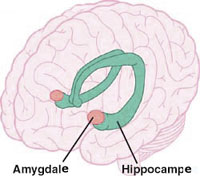
 - which is
- which is singular
even if it is bilateral said Ivan Rodriguez - in the nervous system (it is part of the limbic system) and not the tonsils the back of the throat (secondary immune organ)! The amygdala was greater for more social beings? How many friends you could be predicted by the size of the tonsil (See fig 1) found in a wide range of vertebrates, reports
Weave
Weave
Dr. Janelle . (2010 in a news item in Nature (
here).
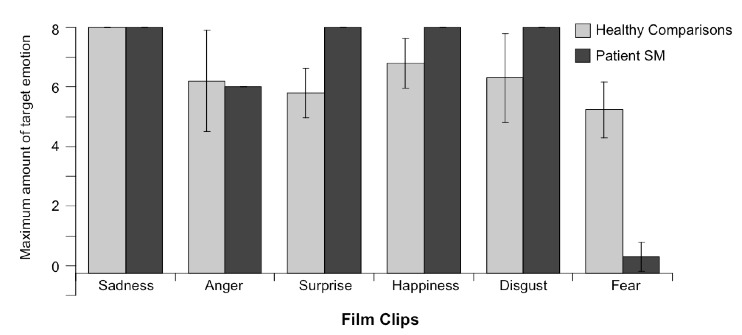
are normal, except for fear. (Source: Feinstein, et al. (2011)
This case reinforces the thesis that emotions are the result of the interaction of these neurons in various parts of the brain and the amygdala plays a crucial role. Fig 6: The dual circuit of emotions . (source:
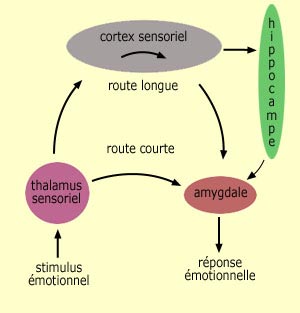
Dubuc, Bruno (2008). , More specifically, it reinforces the idea dear to Damasio, one of the authors, that emotions are bodily symptoms under control of the amygdala, in fact, directly produced by the stimuli which we realize. In this view, emotions are the accelerating pulse, sweating, dry throat, ... and then we would realize our emotions through the body. Damasio Antonio: "The rational choice does not exist" (Research- intranet) Damasio, AR, & White, M. (2001). The error Descartes: Paris: Odile Jacob. On the other hand, the absence of the amygdala when the malfunction does not prove that's where all what constitutes the emotion of fear occurs, it shows that this structure is necessary to fear. As if we remove the spark plugs of a car and it rolls over, we can deduce that they are necessary, but not that candles cause the wheels are
the engine! it does not prove that any mechanics is useless and to repair the car should make incantations rather as examine rigorously its operation ...
)
Dubuc, Bruno. (2008), 
Dubuc, Bruno (2008). , More specifically, it reinforces the idea dear to Damasio, one of the authors, that emotions are bodily symptoms under control of the amygdala, in fact, directly produced by the stimuli which we realize. In this view, emotions are the accelerating pulse, sweating, dry throat, ... and then we would realize our emotions through the body. Damasio Antonio: "The rational choice does not exist" (Research- intranet) Damasio, AR, & White, M. (2001). The error Descartes: Paris: Odile Jacob. On the other hand, the absence of the amygdala when the malfunction does not prove that's where all what constitutes the emotion of fear occurs, it shows that this structure is necessary to fear. As if we remove the spark plugs of a car and it rolls over, we can deduce that they are necessary, but not that candles cause the wheels are
the engine! it does not prove that any mechanics is useless and to repair the car should make incantations rather as examine rigorously its operation ...
- Separate the emotions of the body? K. Scherrer
- extracts intranet (Ietemp) In bio springboard
)
- Emotions and memory (26 August 2009 Forget what you know, the memory has changed! )
- Emotions and pheromones May 29, 2009
- mice detect the disease at the smell ...
- Science is not done certainties
- If you are sure of your point of view, are a scientist, doubt,
If you doubt, come to support the views of hard facts ...
That there are people much more knowledgeable than others is not very intriguing. What is extraordinary, and devilishly instructive is how two people with close acquaintances may differ in how they interpret them. Placed, as to know, about the same point they observe worlds that seem to have nothing in common irreducibilities Such interpretations are more rewarding than the differences in areas of knowledge. An author Nordon, D. (2007) . Provided I do not understand!
That there are people much more knowledgeable than others is not very intriguing. What is extraordinary, and devilishly instructive is how two people with close acquaintances may differ in how they interpret them. Placed, as to know, about the same point they observe worlds that seem to have nothing in common irreducibilities Such interpretations are more rewarding than the differences in areas of knowledge. An author
not wiser than his readers but which includes know in a way that surprised the dumbfounded and even shocking, gives them an author who has more to offer than their larger knowledge that theirs. If you're left, read the right authors, if you are rational, read mystical (and symmetrically, course)! Stimulation of the disagreement arises. Nobody knows what they think when we understand the reasons of those who think otherwise.
take advantage of this special day to take the measure of a fascinating debate that is sure to appear in class!
Sources Adolphs, R., Gosselin, F., Buchanan, TW, Tranel, D., Schyns, P., & Damasio, AR (2005). A Mechanism for impaired fear recognition after amygdala damage. Nature, 433 (7021), 68-72. doi: 10.1038/nature03086. doi: 10.1038/nn.2724
Bickart, KC, Wright, CI, Dautoff, RJ, Dickerson, BC & Barrett, LF (2010). Amygdala volume and social network size in human. Nat Neurosci
, advance online publication
The brain at all levels. Mc Gill
- Feinstein, JS, Adolphs, R., Damasio, A., & Tranel, D. (2011). The Human Amygdala And The Induction and Experience of Fear. [Doi: DOI: 10.1016/j.cub.2010.11.042 ]. Current Biology (In Press, Corrected Proof). extracts-intranet.pdf Nordon, D. (2007). Provided I do not understand! For Science. (December 2007), 5.
Purves, et Al (2001) Neuroscience Sunderland (MA): Sinauer Associates, Inc.. - Weave
- Dr. Janelle
- . (2010). Amygdala
at the Centre of your social network. Nature News 26 December 2010 biology. To explore how we could keep alive the link between research and teaching.


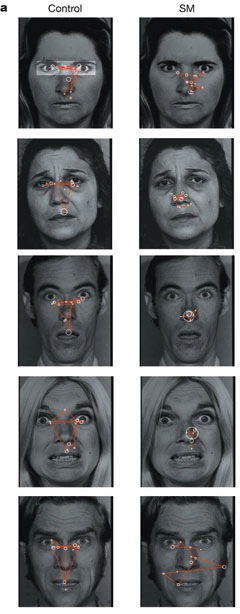
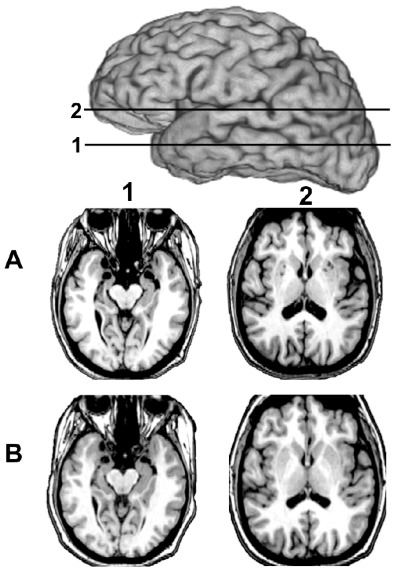
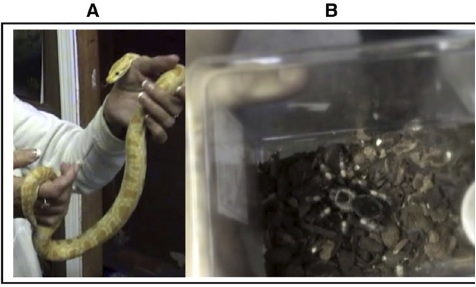
0 comments:
Post a Comment